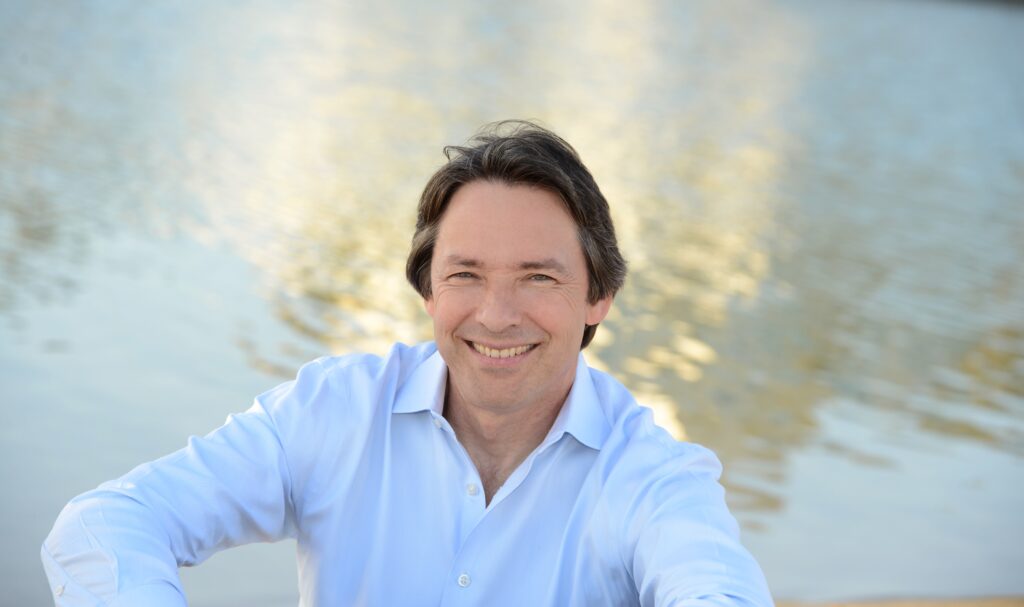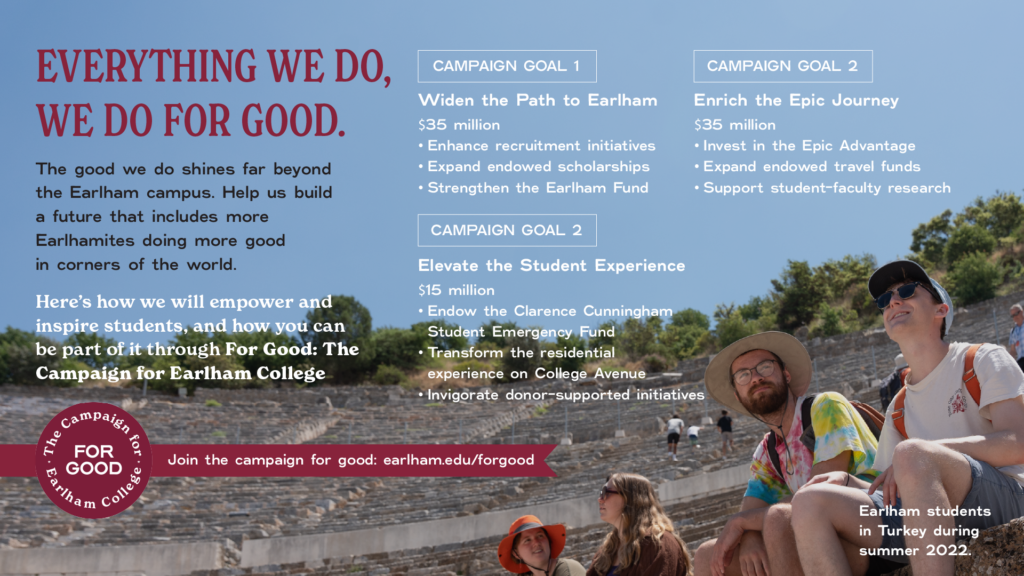Few resources in human history have caused more conflict than water, and according to Eric Garner ’84, that won’t change anytime soon.

In the popular understanding of climate change, emissions are often the leading topic of debate. Fair enough; emissions are a major contributor to the changing climate of the planet. But there’s another vital consider- ation, says Eric Garner ’84.
“Climate change is really all about water—too much or too little,” he says. “Rain and snowfall, superstorms, droughts—water and water rights are only going to become more important, and the potential for conflict will continue to increase.”
Garner has spent his career in water law—a path he never would have imagined for himself if you’d talked to him during his first semester as a biology major at Earlham College.
“I figured I’d get a master’s degree and work for a non- profit or in academia,” he says. “No one in my family was in law. It was just not something I had considered.”
During his first year at Earlham, Garner took a peace and global studies course. It was there that he wrote his first paper on rainforest destruction and was introduced to the fascinatingly complex world of environmental policy issues. To further explore these topics, he picked up a political science major in addition to biology.
Late in his junior year, Garner met with political science advisor and professor George Lopez who suggested Garner take the LSAT and apply to law schools. Not yet sold on the idea of law school, he also applied for several joint degree programs—but ultimately settled on attending the University of Michigan for his J.D.
While studying in Michigan, Garner interned with the International Wildlife Federation. He still imagined himself finding a position with a nonprofit after graduation. After all, working as an environmental lawyer in private firms typically means representing major corporations and defending toxic dumpers—not exactly what he had in mind for a career.
But after taking a course on water law, Garner began a deep dive into the subject and landed an interview with a private firm in California that specializes in water rights. He’s been with them ever since and has been managing partner for the last 18 years.
“People need water, the environment needs water, farms need water—and there’s no right answer,” says Garner. “Everything about water law is in shades of gray, and that suits my personality.”
The following is an edited Q&A with Garner.
Water rights don’t matter if there’s enough water, so in some regions like the Midwest, it’s not an issue right now. But in the western U.S. and many places in the world, that’s not the case.
When it comes to water, there’s human domestic consumption and there’s agriculture usage, which comprises about 80 percent of water usage worldwide and in most states—and then the environment needs water, too.
When the water rights allocation system was first created, the environment wasn’t part of the equation. It was in the 1970s that we realized we needed to include water for the environment in these allocations.
Most of the cases we see in California involve public agencies needing drinking water, so they are cities and water districts competing with agriculture for water usage.
The Colorado River is a great illustration of water issues at the macro level. In 1922, they allocated water to seven states and Mexico when they built the Hoover Dam. They thought they were set—the allocation was resolved.
Then, in the 21st century, we realized there’s not as much water as we origi- nally thought, and now there’s climate change, too. What do we do? There’s been a lot of back-and-forth between the States and Mexico trying to deal with
the cutbacks needed. And the resource is always moving, so it’s hard to have a fixed solution.
At first, I thought that after water for domestic use, you take water away from whatever user, and you give it to the environment. But there are also times you have to realize that taking thousands of acres of agriculture out of production has a big impact on food supply, farmers and farmworkers.
The nice thing about representing government agencies is that they need the resource to be there in 10, 50, 100 years. So there’s an inherent desire to conserve the resource and manage it for the long term, as opposed to private interests, which sometimes are more focused short-term profits over long-term conservation.
In my cases, I typically find myself right in the middle, which is the right place to be when it comes to water.
You can look around the world, and nowhere do we do a good job of managing water, particularly groundwater. I’ve worked in Africa, Asia, Trinidad, the Middle East, and it’s the same issues everywhere. It’s not about culture, religion, race or country; it’s a human issue.
But if anyone can solve these problems, California will. We have the money, the infrastructure and the brain power to throw at this problem.
Water rights priority. Usually, it’s the priority arguments that are the most challenging.
Governmental agencies came later in time to agricultural interests. Farming developed first, then there were small towns, then, all of a sudden, big cities emerged. Ventura County between L.A. and Santa Barbara, for example, is still the 12th largest agricultural county in
the U.S. Water has had existing uses there for a long time, and they feel that the city shouldn’t be able to take the resource, or if it does, it should pay for it.
These cases are complex and involve a lot of parties, so they take a long time to resolve. To determine the rights to groundwater, you have to bring in everyone who uses it or claims a right to it, which can be in the thousands. One case had nearly 20,000 parties. That case took 22 years to resolve.
But these issues are complex, and it’s our most important resource, so it should be that way.
Yes! Earlham, and being raised Quaker, that Quaker training and consensus have come in incredibly handy in handling these cases. Most of the parties settle. But it takes sitting in rooms for hours and days and months on end, listening to people’s points of view, trying to find common ground and going back and forth.
I got involved in one case because two parties were so at odds, nothing was getting done. I sat in the room with them for several weeks, and finally managed to broker a deal and get it settled. The parties wouldn’t talk to each other, but I could talk to each of them to move the process forward.
That’s really been a theme of my career with this firm. Part of my job is managing partners, and we’ve had maybe two votes in the last 18 years, because we mainly work through consensus.
Let me try to strike an optimistic note. I try to be an optimist.
The potential for conflicts around water is increasing. As populations grow, water becomes scarcer. With climate change on top of that, it’s hard to predict how weather patterns will change. But the trend will likely be more competition for the resource, and therefore the potential for more conflict.
That said, most of the time, countries—even countries with serious histories of disagreement—are able to work out resolutions.
It’s too important of a resource to tamper with, so they almost always have to come to a resolution.
Story by Jennifer Gose. Photos courtesy of Eric Garner.
